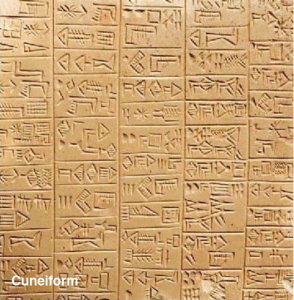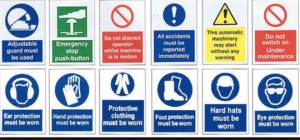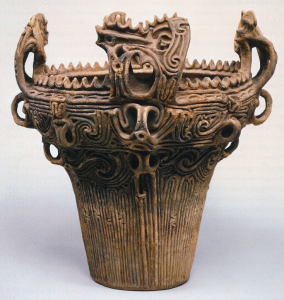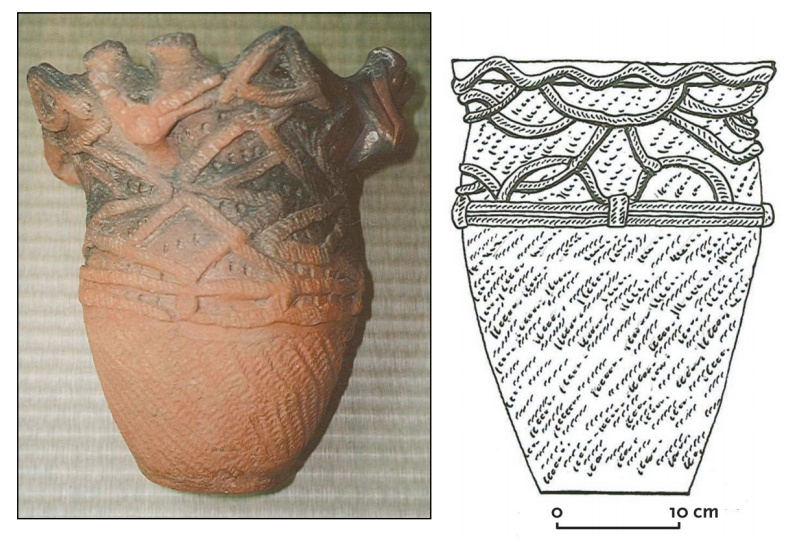Lecture: Handprint & Handwriting ( 35,000 BCE – 0 CE)

Cuneiform: Early Persian script from Judy’s lecture
In our 141 Survey 1 on 35,000 BCE to 0 CE, we traced back to the earliest evolution of written communication systems in different parts of the world including the Fertile Crescent, the Indus Valley, Egypt and East Asia.
A take away from the lecture was realizing how much the pictograph dated back in 3100 BCE reflects the icons and signage we see everyday in cities. Although modern designers could opt to a more realistic approach, many choose to use simplistic shapes in logo or signage design. In that regard, we know that it is part of human nature that we can effectively associate certain recognizable and iconic shapes to an object or idea.

Iconic shapes used in Logo Design.

Traffic Signages
By using simple and iconic shapes and letterforms in pictographs (on surfaces like rocks, papyrus, bamboo and ceramics), ancient people were able to preserve parts of their history and cultures, much like how we produce books these days.
Research: Ceramics In Japan
With the discovery of the convincing method to ensure fine ceramic production, the fascinating manufacturing technique had been used since the time of 10,500 BCE in ancient Japan to form vessels. So how exactly do they produce these impressive pottery designs? In this weekly research post, we will be tracing back to the archaeological records and take a tour to examine the creation of ancient Japanese ceramics.
Jōmon Period (10,500 BCE – 300 BCE)
 The known ceramics culture in Japan falls back to the Jōmon period where the ceramic production was almost unknown to many parts of the world. By stacking coils of wet clays to form shapes, the coiling technique became a very useful technique for Jōmon to build more concrete and taller vessels. In the early Jōmon period, pottery appeared to have rounded and flat bottom with bulky surface that closely resembles the ones in China. And eventually in the middle to late Jōmon, the style began to evolve to a more decorative approach with rope and geometric patterns (“Ancient Japan to 1185 Prehistoric Japan Pre-Ceramic culture”). Some of the design motifs in the Jōmon period were the tied cords patterns formed with relief decoration as well as the subtle rope imprints on the vessel’s surface (Kanaseki and Sahara 18).
The known ceramics culture in Japan falls back to the Jōmon period where the ceramic production was almost unknown to many parts of the world. By stacking coils of wet clays to form shapes, the coiling technique became a very useful technique for Jōmon to build more concrete and taller vessels. In the early Jōmon period, pottery appeared to have rounded and flat bottom with bulky surface that closely resembles the ones in China. And eventually in the middle to late Jōmon, the style began to evolve to a more decorative approach with rope and geometric patterns (“Ancient Japan to 1185 Prehistoric Japan Pre-Ceramic culture”). Some of the design motifs in the Jōmon period were the tied cords patterns formed with relief decoration as well as the subtle rope imprints on the vessel’s surface (Kanaseki and Sahara 18).
Yayoi Period (300 BCE – 300AD)
 After many years of advancement in the Jōmon culture, the influence of the new Yayoi culture began to spread from Kyushuto the northern part of Japan.
After many years of advancement in the Jōmon culture, the influence of the new Yayoi culture began to spread from Kyushuto the northern part of Japan.
Similar to the Jōmon communities that produced hand-made ceramic vessels, the Yayoi’s pottery was mainly unglazed vessels created with approximately 700-900 C fuel (Mizusawa 1). Nevertheless, since the main Yayoi population was originally from Korea, the ceramic design patterns and method were also evidently different from the ones in the Jōmon period (Kanaseki and Sahara 17). In comparison to the pottery in Jōmon period, pottery design in the Yayoi Period appeared to be more simplistic. Instead of using the relief method for sculpting, Yayoi people designed patterns by incising geometric shapes, flowers or other decorations on the vessel’s surface (Kanaseki and Sahara 17). Pottery in the Yayoi period was also produced for multiple usage, and because of the different pastes and manufacturing technologies, the vessels often appeared to thinner and lighter than the ones in Jōmon.
Sum
The ceramic creation with only such primitive materials from early human history is still considered to be impressive in this day and age. Though many of ceramics creation from were profoundly influenced by Chinese and Korean cultures and technology, the Jōmon and Yayoi development in the distinct ceramic design style ultimately represents the richness and diversity of ancient Japanese culture.
References:
Kanaseki, Hiroshi, and Makoto Sahara. “The Yayoi Period.” Asian Perspectives, XIX(I), 1976.

Leave a Reply
You must be logged in to post a comment.